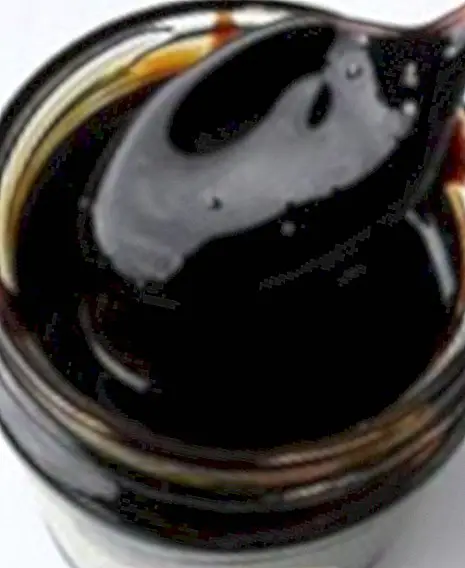Liver cirrhosis: what it is, causes, symptoms, types and treatment

You can define the hepatic cirrhosis as a condition that directly affects the tissue of the liver of the carrier due to a series of chronic diseases. According to the WHO (World Health Organization) around 30,000 people die worldwide due to this disease that affects one of the most important organs of our body.
One of the most conventional pathologies at the time of suffering cirrhosis in the liver is just the presence of fibrosis, which is nothing but the deposit of nodules through all the walls of the liver, something that later hinders the correct functioning of the liver and therefore to all the processes of synthesis and purification of any nutrient.
What is cirrhosis in the liver?
We could define it as the final consequence of chronic liver diseases, which eventually cause the progressive decline of liver functions, as well as the loss of its own normal architecture.
In fact, any disease or pathology that causes inflammation of the liver Chronically it can lead to cirrhosis, especially as the years go by. When it appears, it can be irreversible if it is not treated quickly and the liver is prevented from continuing to suffer damage.
What are your causes?
As we indicated, the main cause is the presence of fibrosis. Also, the causes of cirrhosis can be given by a multitude of circumstances that we will shed next: First, and the most common of them all, is the excessive consumption of alcohol in a continuous way that causes what is known as " Liver cirrhosis of Laennec. "
There is also another very common liver disease, known by the name of fatty liver, more common than you think because although there is a variant caused by alcohol consumption, its presence is not always related.
Second, this disease can also appear caused by a hepatitis that has ended up becoming chronic (especially in the case of that caused by virus C), or other congenital metabolic diseases such as hemochromatosis or Wilson's disease.
In the case of hepatitis, as was found in 2006, the viruses that cause it (B and C mainly) tend to be a common cause of cirrhosis and / or liver cancer.
Main types
Did you know that there are different types of cirrhosis in the liver? They depend directly on the underlying cause that caused their appearance. The most common according to the specialists of the Mayo Clinic They are the following:
- Alcoholic cirrhosis: It is one of the most common, caused by excessive consumption of alcohol, and prolonged over time.
- Non-alcoholic fatty liver disease: What is popularly known as fatty liver or hepatic steatosis. The presence of fat in the liver cells causes fibrosis.
- Cirrhosis due to hepatitis: It is caused by viral hepatitis, either by hepatitis B or C.
- Primary biliary cirrhosis: Caused by a failure of the immune system, which attacks the different cells lining the bile ducts.
- Secondary biliary cirrhosis: It appears as a result of chronic obstruction of the bile ducts.
- Cryptogenic cirrhosis: It is diagnosed when it is medically unknown what causes fibrosis.
- Primary sclerosing cholangitis: It is caused by obstruction of the bile ducts after swelling.
It is evident that alcoholic cirrhosis is considered one of the most common, mainly because of the alcohol consumption so ingrained today in our society, even among the youngest ones (every time the age at which alcohol is started is earlier ).
symptom
Cirrhosis can cause all kinds of symptoms in those who suffer from it. And the worst of all is that they will get worse as this disease continues to develop over time. Therefore, it is very important to treat it as soon as possible:
- Jaundice. It is the most common. The skin becomes yellowish, as a result of the liver not being able to eliminate the bilirubin of blood normally.
- Changes in the skin The appearance of vascular dilations is common, especially in the cheeks, arms and trunk.
- Nausea and vomiting. As the liver is not able to function at full capacity due to cirrhosis, it is very likely that all types of nausea and vomiting will appear.
- Weightloss. Cirrhosis can cause the person in question to lose weight gradually. This is because the liver is not able to properly absorb nutrients from the food.
- Fluid retention. Edema (accumulation of fluid in the lower extremities) and ascites.
- Portal hypertension. Cirrhosis can also cause more serious signs such as portal hypertension. This disease consists of an increase in blood pressure in the portal vein, which is precisely what connects the liver with the intestine and the spleen.
- Bleeding Since the liver fails, bleeding from the nose or gums is common.
- Liver cancer. Finally, it should also be noted that if cirrhosis is not treated in the short term, this can lead to a clear case of liver cancer.
Among the tests that are usually performed for the diagnosis of cirrhosis in the liver we can mention two of the most common: abdominal ultrasound (which allows visualization of liver status), and biography of the liver (which consists of taking a small sample). of the liver and analyze it in the microscope).
On the other hand, there is no doubt that the main complication of cirrhosis is liver failure and, in short, the malfunctioning of the liver that can lead to major and much more serious complications. In addition, it is known that people with cirrhosis have a higher risk of liver cancer, as demonstrated in a study published in 2016.
How can it be avoided? Prevention
It only remains to finish this article to talk about the different ways to end cirrhosis. We emphasize that it is very important to treat it as soon as possible so that the evolution does not get worse. For this, we must take into account the following treatment:
- Reduce drastically the consumption of alcohol. Alcohol is one of the great "enemies" of the liver and one of the main causes of cirrhosis. Therefore, it is mandatory to sharply reduce the consumption of alcohol if we want to prevent their evolution from worsening.
- Lead a healthy life in general. For a correct functioning of the liver, the best thing that the patient can do is to take a healthy and balanced diet in all the senses. Neither should you abuse overly spicy or salty foods. In this way, surely the cirrhosis will be receding little by little.
- Improve the flow of bile. This will be done through an endoscopy with which the flow of this substance through all the blood vessels of the liver will be improved. This will ensure that this body can function more effectively.
- Liver transplant. Occasionally, cirrhosis has reached such an advanced level that there will be no other option than to perform a liver transplant. For this situation, it is best to contact the family doctor so that he can act accordingly.
- Martínez-Esparza, Tristán-Manzano, Ruiz-Alcaraz, García-Peñarrubia (2015). Inflammatory status in human hepatic cirrhosis.World J Gastroenterol. Available at: //www.ncbi.nlm.nih.gov/pubmed/26556984
- Estimate of hepatocellular carcinoma's incidence in patients with alcoholic cirrhosis (2018).J Hepatol. Available at: //www.ncbi.nlm.nih.gov/pubmed/30092234
- Detlef Schuppan and Nezam H. Afdhal (2008). Liver Cirrhosis.Lancet. Available at: //www.ncbi.nlm.nih.gov/pmc/articles/PMC2271178/
Updated: August 13, 2018 This article is published for informational purposes only. It can not and should not replace the consultation with a Physician. We advise you to consult your Trusted Doctor. ThemesLiver diseases Liver



